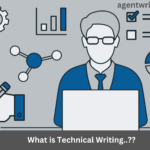Whether you are a content writer, editor, or content marketer, you must know about plagiarism tools. If you are a freelance writer, you may have seen lots of job posts about writing where clients want 100% unique writing.
Plagiarism is a way of taking other writing and claiming it as one’s own writing.
What is Plagiarism Checker
A plagiarism checker is a tool for detecting a copy of other writing. Goo checkers don’t only detect direct copy but also can detect paraphrasing.
Type of Plagiarism
There are different types of plagiarism that you may encounter in the writing sector.Although they differ in severity, it is still not acceptable to commit any kind of plagiarism, and plagiarism checkers can detect all of them very easily.
Some of the most common types of plagiarism are –
- Direct Plagiarism,
- Verbatim Plagiarism,
- Paraphrasing Plagiarism,
- Self-Plagiarism
- Citation Plagiarism
- Image Plagiarism
- Patchwork Plagiarism, etc.
Direct Plagiarism
Direct plagiarism, also known as global plagiarism, is when you take someone else’s work entirely and use it as your own. That includes if you find a text online and submit it as your own work. Also, if you get someone to write your essay for you, it will be counted as direct plagiarism.
This is one of the most serious types of plagiarism, as it involves deliberately and directly lying about the authorship of a work. So do not even think about doing it.
Verbatim Plagiarism
When you directly copy and paste some content from a source and do not cite, the author of that content is known as Verbatim Plagiarism.
If you want to use an author’s exact words, you need to quote the original source by putting the original source in quotation marks and including an in-text citation.
Paraphrasing Plagiarism
It is one of the most common types of plagiarism that many people may face. So, pay extra attention to it. It is completely okay to paraphrase, but just because you rewrote it in your own words, it does not make the idea yours.
Hence, remember to give credit and cite the original source.
Self Plagiarism
You can also commit plagiarism by reusing work you have previously submitted. This is known as self-plagiarism. So, no turning in a paper you have already submitted for another class or recycling ideas developed from previous assignments.
Just because it is your own work, it still counts as academic dishonesty because you have already gotten credit for the work.
Citation Plagiarism
When writing an academic paper or essay, it is common practice to cite the relevant works of others in order to strengthen one’s own claims. As long as proper attribution is made, I have no problem with that at all.
This includes utilizing the appropriate citation format for your field when citing your sources. However, some students attempt to get away with completely plagiarizing someone else’s work without even acknowledging the source.
That, my friend, is citation plagiarism, which is when you take the work of another and present it as your own without giving proper credit. As tempting as it is to avoid conducting actual research, trust me when I say that doing so is a bad idea. So, always remember to properly cite your sources and stay away from this academic trap.
Image Plagiarism
Plagiarism in the magical arts is unethical because it involves taking someone else’s work without crediting them. A quick and easy technique to improve your own material, it can have dire effects if you’re not careful. Images can be anything from a photograph or graphic to a logo or design.
Visual works made by someone else are protected by copyright laws in the same way that text is. Plagiarism in the form of images occurs when someone uses another person’s work without permission or proper attribution. This not only devalues the original creator’s work but also violates their right to intellectual property.
Patchwork Plagiarism
Imagine a patchwork; you take different pieces of cloth and make it into a whole. That is exactly what patchwork, or mosaic plagiarism is. You take phrases and ideas from many sources and combine them to create a new text.
In order to piece the different texts together nicely, this kind of plagiarism often includes some paraphrasing. It also requires a little more effort than the rest. So, if you are already putting in the effort anyways, might as well avoid it completely!
Why Should you USE a plagiarism checker?
The uniqueness of your writing can prove that you are being honest with what you are writing. If content is plagiarised, this means your writing is not original, thus putting you through some unavoidable consequences.
Now, to solve these issues, you need to use a plagiarism checker before you publish any content or research articles. Here are some of the reasons why you should use a plagiarism checker –
- Originality Insurance – With the help of a plagiarism checker, you can check whether your content is unique and original or not. This tool can help to check whether you have copied texts from other resources.
- Avoiding Repercussions – Plagiarism can result in significant consequences to you such as legal action, loss of reputation, or academic punishments. You may prevent these repercussions by utilizing a plagiarism checker to identify any chances of plagiarism before submitting your work.
- Increasing Credibility – Employing a plagiarism checker might help you become more credible as a writer or researcher. It demonstrates that you value uniqueness and are devoted to generating high-quality work.
- Time Saver: You can save your precious time with the help of a plagiarism checker. How?
You can rapidly identify any instances of plagiarism of your work. You can do all the adjustments needed before submitting work with the help of a plagiarism checker. You do not have to worry about modifying it later.
Criteria for choosing a plagiarism checker
Accuracy
Accuracy is the most important factor in choosing a plagiarism checker tool. You will be happy to pay 1 dollar or more per article to check for plagiarism if tools give 100% accuracy.
Powerful plagiarism tools not play show the plagiarism but also show you the types of plagiarism, such as copying, paraphrasing, minor changes, and omitted words. Thus you can understand the quality of writing and the value of writing.
Speed
Speed is another factor that you should consider at the time of choosing a plagiarism checker tool. We expect the high speed of any tool to finish a work. But you need to think again about this factor.
The more accurate plagiarism tools take relevantly more time to complete a task. It is normal because if you want to complete a task with quality, you must need to give more time on it. But time should be relevant.
Cost and pricing strategies
If you are a student or beginner-level writer, you may not need high-level plagiarism tools. In this case, you can use some best free plagiarism checker tools. Higher accurate tools charge high. Based on the goal of your project, you need to choose the best tools with the best budget.
Consider the pricing strategy of a tool. If you are a regular user of plagiarism tools, you can choose a tool that charges monthly basis. But you should choose credit basis tools if you are an irregular user of plagiarism tools. Then, you can check your content even after 1 year later with purchased credit.
My Suggestion: If your project needs a high-level of accuracy, you should not sacrifice on cost. Though it will cost high, the ultimate result will benefit with high return.
User-friendliness
is another crucial factor that you should consider at the time of choosing a plagiarism checker tool. Some tools only show the percentage of plagiarism in content but don’t show in which part is plagiarised. Though the price of those tools is low, you can’t resolve the plagiarism problem. You need to work blindly.
User-friendly plagiarism checker tools allow you to check your content in lots of ways. You can check in free text, URLs, files, and even source code.

User-friendly tools will also help you find the history of plagiarism tools. If you are an editor or supervisor of a thesis, you may need to share your work after checking for plagiarism. In this case, you need to check the availability of the share option in the plagiarism tool.
Additional features
Some plagiarism checker tools give lots of facilities such as grammar checking, citation checking, comparing text, or other features. If you need one of them, you need to check those features on it.
How can I Ensure the Accuracy of Plagiarism checker tools?
Sometimes we become confused as different plagiarism checkers tools show different results. But what is the process of ensuring what is right? There are lots of ways you can ensure the accuracy of a tool.
Database Size
The size of the Plagiarism tool’s database plays a significant role in producing reliable results.
It is generally believed that a plagiarism tool’s accuracy improves with the amount of data it has access to. This is because a larger database provides the program with more information to analyze, increasing the likelihood that it will uncover similarities between the input text and other sources.
Some, however, say that the algorithms and other features of a plagiarism tool are more important than the size of its database. Others counter that the frequency with which the database is updated with new sources is just as important to the reliability of the results as the database’s size.
This argument cannot be settled once and for all. The breadth of a plagiarism tool’s database, however, stands out as an obvious differentiator amongst options.
How Robust is the Algorithm
The algorithm employed to make such a determination is equally crucial. Better detection rates may be achieved by using more advanced plagiarism detection algorithms. For instance, a more efficient method may be able to identify alterations made to text sources after a copy was made.
Analyzing the Outcomes
Checking the tool’s ability to interpret scan findings effectively is an important step in determining whether or not to use it as a plagiarism detection method. You definitely don’t want a bogus positive or negative outcome. Instances where the plagiarism checker incorrectly flags text as plagiarized are known as “false positives.” When a plagiarism checker indicates that text is original when it actually contains plagiarized material, this is known as a false negative.
The findings of a plagiarism check might be interpreted in several ways. There are programs that will tell you what percentage of your material is comparable to that of other websites. Other resources will catalog every resource against which your content has been matched. Still other programs will flag any instances of content duplication in your writing.
Interpretation Ability
The quality of your plagiarism scan results depends on the tool’s interpretive abilities, so keep that in mind when making your selection. To find the one that fits your needs the best, it’s important to pick a plagiarism checker with a high rate of accuracy and multiple ways to understand the data.
Paraphrasing detection
Any plagiarism checker will tell you that spotting paraphrasing is a challenging task. You need a solid grasp of the source material if you’re going to paraphrase it accurately and put it in your own words. This is difficult for a computer to do, which is why many paraphrase detection systems are inaccurate.
However, there are a few things a plagiarism checker can do to try to identify paraphrasing. Synonyms and closely related words are the first thing it can do. The plagiarism checker may flag your work as plagiarized if you have used too many of the same terms or if your sentence structure is too similar to the source.
The technology also has the ability to analyze the text as a whole to determine its meaning. Even if you’ve paraphrased or paraphrased closely, the plagiarism checker may still mark your work as plagiarized because the ideas are similar.
If you’re concerned about committing unintended plagiarism by paraphrasing, it’s advisable to ensure that you have a solid grasp of the source material before you begin rewriting. That way, you can avoid plagiarizing yourself through the usage of comparable language or concepts. And if you do borrow some of their language or concepts, be sure to give credit where credit is due.
Is the detected plagiarized source relevant to the topic you are checking?
It is vital to examine the relevance of the source that was plagiarized while checking for plagiarism in a paper or other written work. Plagiarism in writing does not automatically render a document useless for its intended purpose.
Say, for instance, you are assigned to write a research paper on the American Civil War. A section of another article strikes you as strikingly similar to a section of a war book you’ve been reading. When you look closer, though, you see that the source of the plagiarized text is an essay about the causes of the war, and not a history book. In this situation, the plagiarized content is still useful and can be used into your paper.
However, there are situations in which the source you plagiarized from is completely irrelevant to your research question. A passage from an article about 18th century French poetry has been plagiarized into a study on Shakespearean sonnets. The content you copied could be perfectly factual and well-written, but it has nothing to do with your topic and therefore should not be included in your work. Either discover an alternative source for the information or rework it so that it is more applicable to your paper.
The relevance of copied content to your issue is something you should think about carefully.
Top 6 Tools For Plagiarism Checker
There are lots of sources where you will get different opinions about tools. Bloggers prefer to review a tool based on their usage. Sometimes, they show positive features based on their affiliation. I will write in an unbiased way.
Today, I will practically check two articles to check the accuracy of every tool. As accuracy is the crucial factor of choosing a plagiarism checker tool,
Copyscape ( Best Budget Friendly )
Copyscape is one of the well-known plagiarism checker tools. Though I use other tools also now, I use this tool with confidence.
Features and Benefits
With its powerful Copyscape premium, you can check every copy or content you receive from your writer. Thus, you can protect your blogs from Google’s penalty because search engines don’t like plagiarised content.
You can also check who copies your content with its copy entry feature.
Pros
- Its comprehensive database, including Google’s search API ensures higher accuracy.
- You can easily use it for its user-friendly interface.
- Its price is also affordable. It has a credit system, so you can use it whenever you need it.
Cons
- You can’t check the type of plagiarism such as copying, paraphrasing, omitting words, or minor changes.
- Even it can’t catch paraphrased content (
- It doesn’t have shareable options after checking for plagiarism.
- You will get limited features on it.
- Sometimes, it is hard to find the plagiarized sentences from the sources.
Price plan : It costs $19.95 per month for up to 10 pages on your site, and $1.00/month for each additional page up to 500 pages
How to use
Copyscape is user-friendly and easy to use. Let’s watch how it works.
Our Test;
Part 01: 4 Result found
Part 02: 7 results ( Successfully caught our intentional two sources and also showed other 3 sources )
Part 03: 0 results / ( 0% plagiarism )
2. Turnitin LLC
This is a well-known copy-checker tool for academic persons.
Features and Benefits
Turnitin LLC is using advanced machine intelligence technology to give the best result with few time.
Its huge database includes web pages, publications, academic journals, and so on.
Pros
- Huge database and high accuracy
- Good for teachers and educational institutions
Cons
- It is not user-friendly.
- It is pricy as it is designed for educational institutions, not for individuals.
Price plan
Free for Students and made for educational institutions
How to use
Our Test Result
Part 01: No Result
Part 02:

It has successfully captured one of two sources that I have directly added from two sources.
Part 03:

It has successfully captured from where I took content for paraphrase. So, it is great tool to check plagiarism as well as to check paraphrase contents.
3. Copyleaks
Copyleaks is one of the most powerful and cloud-based plagiarism checker tools which detect instances of plagiarism.

Features and Benefits
It has a comprehensive database of over 60 trillion web pages. So you will get the most accurate data about your writing. It is hard to pass writing of its huge database and AI-powered checking system. For this why, you can find the instances of plagiarism, such as paraphrasing, copying, rewording, or writing with minor changes.

You can easily download or share the plagiarised file with your team or anyone you want. It also shows instances of plagiarism with different colors. So you can easily resolve the plagiarized part.
There are lots of features of Copyleaks that will smooth your plagiarism-checking task. You can also compare two pieces of content to check the similarity.
Its advanced features include automated scans, batch uploads, schedule scans, and customized scanning options.
Pros
- Large database and high accuracy
- User-friendly
- Competitive price ( though the price seems higher)
Cons
- It can’t detect false positives and false negatives
Price plan: Pricing starts with 100 pages for 10.99 dollars. But you can buy more to save money.
How to use
Our Test;
Part 01:

Though I have not copied from anywhere, it shows 54% plagiarism, where 5.4% is identical, 6.4% minor changes, and 42.3% paraphrased. So, there has no reliability of this tool. Let’s check the second test.
Part 02:

It has successfully caught two sources where I have copied two paragraphs. So, in the case of direct copy, this tool is great. Now, let’s see its capability to capture paraphrased content with our test 03.
Part 03:

This powerful tool can detect paraphrased writing. So, it’s reliable for checking paraphrased content.
4. Quetext
Quetext is another popular plagiarism checker tool for bloggers, students, professionals, and webmasters.
Features and Benefits
It can detect plagiarism from webpages, academic sources, news sources, or even online textbooks. Its DeepSearch™ technology identifies verbatim plagiarism, paraphrased content, and other forms of content.
You can resolve plagiarism with its hassle-free features. Its color-grade feedback will help you to identify the parts of plagiarism easily and resolve them.
Pros
- Database backed by billions of internet sources ensures higher accuracy.
- Can detect paraphrased content.
- Can detect partially copied sentences.
Cons
- Many times detect from irrelevant sources.
- Takes too long to show results.
Price plan

How to use
The use process is similar to other tools. Just copy the content and hit check.
Our test result
Part 01:

Part 02:

Part 03:

5. plagiarismDetector.net
Like the other plagiarism checkers, Plagiarism Detector, a plagiarism checker tool, upholds the similarities of detecting plagiarism of a content. If you think the content is not unique, you can put the content in this tool and find the percentage of plagiarism the content holds.
Features and Benefits
- Comprehensive Plagiarism Checks – plagiarism Detector checks for plagiarism in both text and images, ensuring that all possible sources of plagiarism are covered.
- File Formatting – This plagiarism checking tool supports multiple file programs including word file, pdf, and even HTML too.
- User-Friendly Interface – The interface of plagiarismDetector.net is pretty user-friendly. You can use the tool even if you are a novice.
- Accurate and Quick Results – When you try to check plagiarism using this application, it uses powerful algorithms to provide you with accurate and quick findings.
Pros
- High accuracy
- User-friendly
- You can use it as free also.
- Customized pricing plan
- Support all file formats
Cons
- Cost is relatively high
- Limited words ( 1000) when using free version
- It can’t detect paraphrased writing. Either its plagiarism checker tool has defects or its paraphrase tool is powerful.
- Doesn’t show types of plagiarism.
Price plan

To check the updated price plan, you can visit here.
How to use
My opinion: I have tested this tool with a free version. While testing plagiarism, I have added two parts from online. It successfully caught that parts with accuracy.
Our test Result:
Test 01: 2 % plagiarism found ( plagiarised sentence: This is one of the most serious types of plagiarism, as it involves deliberately and directly lying about the authorship of a work.)
Test 02: 4% plagiarism ( it is caught one of two sources that I copied )
Test 03: 0% plagiarism ( So, we can say it can’t capture paraphrased words )
6. Grammarly
Grammarly is a well-known tool for its powerful grammar correction. It has added a plagiarism tool to its product line. Its database consists of billions of web pages as well as academic papers in private databases.
Features and Benefits
The accuracy of Grammarly’s plagiarism-checking tool is comparatively high as it checks content against its huge database. So, you will get a accurate output.
This tool is very user-friendly.
Pros
- Easy user interface
- Average Accuracy
- Take a very short time to complete a task
Cons
- It can’t show instances of plagiarism
- Can’t catch paraphrased contents
Price plan
It has no other price plan. If you are a user of Grammarly, you can easily use it. To get premium plagiarism checking, you need to have a premium account of Grammarly.
How to use
Our test result:
Part 01: 2% plagiarism
Part 02: 8% plagiarism ( It has caught one source and two other sources from where we have not added content )
Part 03: 1% plagiarism
Final Words
First of all, you need to know the purpose of your work goal. If you need high accuracy, I will say to use Copyscape and Copyleaks. If you are an academic person, I would say to use Turnitin LLC.
Testing materials:







